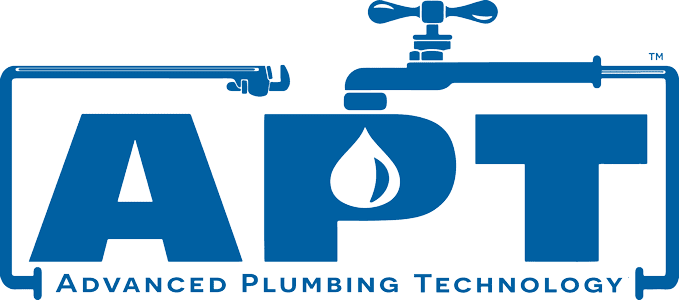Dishwasher Plumbing: Installation, Maintenance, and Troubleshooting
September 23rd, 2023Posted by Brian Shoemaker
At Advanced Plumbing Technology, we understand the crucial role a dishwasher plays in modern kitchens. It’s not just a convenience, but a time-saving and efficient appliance that simplifies your daily chores. However, to fully harness the benefits of a dishwasher, proper installation, maintenance, and troubleshooting are essential. In this comprehensive guide, we’ll delve into every aspect of dishwasher plumbing to ensure you have a seamless experience.
Installing Your Dishwasher: A Step-by-Step Guide
Installing a dishwasher might seem daunting, but with the right approach, it’s a task that you can successfully tackle. Here’s a step-by-step guide to help you through the process:
1. Gather Your Tools and Materials: Before you begin, make sure you have all the necessary tools and materials on hand. These might include a wrench, pliers, a screwdriver, a level, a hose clamp, a dishwasher installation kit, and the user manual provided with your dishwasher.
2. Choose the Right Location: Select a suitable spot for your dishwasher. It should be near your kitchen sink to ensure easy access to plumbing connections. Ensure that the area is level and can support the weight of the appliance.
3. Prepare the Plumbing Connections: Turn off the water supply and disconnect the sink’s plumbing. If you’re replacing an existing dishwasher, disconnect it as well. Follow the manufacturer’s instructions to prepare the water inlet and drain connections.
4. Connect the Water Supply: Use a wrench to connect the water supply line from the dishwasher installation kit to the hot water supply valve under the sink. Make sure the connections are secure.
5. Connect the Drain Hose: Attach the dishwasher’s drain hose to your sink’s drain or garbage disposal unit. Use a hose clamp to secure it in place, ensuring a tight seal to prevent leaks.
6. Secure the Dishwasher in Place: Slide the dishwasher into its designated spot, ensuring it’s level. Adjust the dishwasher’s feet as needed. Once it’s level, secure it to the underside of the countertop to prevent it from tipping when you open the door.
7. Test the Connections: Turn on the water supply and run a test cycle to ensure that there are no leaks and that the dishwasher is functioning correctly.
Maintaining Your Dishwasher: Tips for Longevity
Proper maintenance is key to ensuring your dishwasher’s longevity and optimal performance. Here are some valuable tips to keep your dishwasher in top-notch condition:
- Regular Cleaning: Clean the interior of your dishwasher regularly to prevent the buildup of food particles and mineral deposits. Remove the racks and use a soft brush to clean hard-to-reach areas.
- Check the Spray Arms: Inspect the spray arms for clogs or debris. If you notice any blockages, remove them carefully to ensure the water can circulate freely during the wash cycle.
- Clean the Filter: Most dishwashers have a filter that traps debris. Refer to your user manual to locate and clean the filter periodically. A clogged filter can impact cleaning efficiency.
- Run Vinegar Washes: Running a cycle with distilled white vinegar can help remove mineral deposits and keep your dishwasher smelling fresh. Place a cup of vinegar on the top rack and run a hot water cycle.
- Use the Right Detergent: Choose a high-quality dishwasher detergent that’s suitable for your dishwasher model. Using the right detergent prevents buildup and ensures sparkling clean dishes.
- Inspect Seals and Gaskets: Regularly check the door seals and gaskets for signs of wear or damage. Replace them if necessary to prevent leaks.
Troubleshooting Common Dishwasher Issues
Even with regular maintenance, occasional issues might arise. Here are some common dishwasher problems and how to troubleshoot them:
- Poor Cleaning Results: If your dishes aren’t coming out clean, check the spray arms for clogs, ensure proper loading to allow water circulation, and verify that you’re using the right detergent.
- Leaking Water: Leakage can occur due to a loose or damaged hose, a faulty door seal, or a clogged drain. Inspect these components and replace them if needed.
- Noisy Operation: Unusual noises might result from items rattling in the dishwasher or a malfunctioning pump. Check for obstructions and ensure the dishwasher is properly leveled.
- Foul Odors: Odors can develop from food particles or mineral buildup. Clean the interior, run vinegar washes, and occasionally leave the door ajar to allow ventilation.
- Failure to Start: If your dishwasher doesn’t start, ensure it’s properly plugged in and that the door is securely closed. Check your circuit breaker as well.
In conclusion, Advanced Plumbing Technology knows a well-functioning dishwasher can significantly simplify your kitchen routine. From installation to maintenance and troubleshooting, following these guidelines will ensure your dishwasher operates smoothly and efficiently. Remember that if you encounter any complex plumbing issues or problems beyond your expertise, it’s always best to seek the assistance of professionals to ensure that your dishwasher and other appliances run seamlessly.
